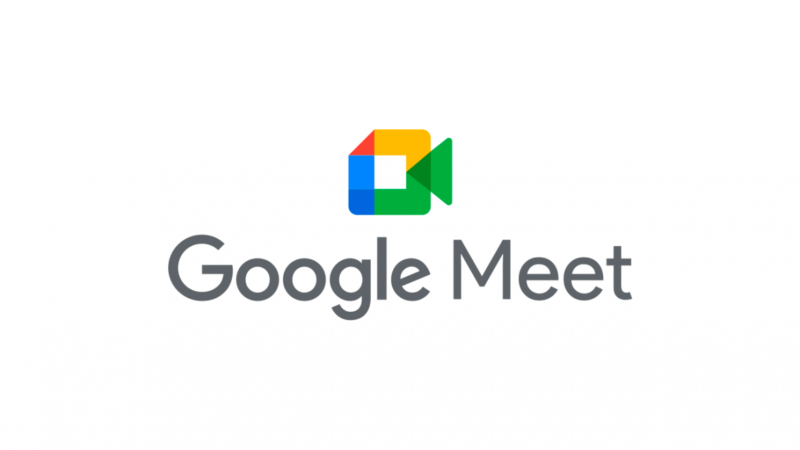In the dynamic landscape of virtual communication, Google Meet has emerged as a frontrunner, offering a plethora of features that facilitate seamless collaboration. Let’s delve into the intricacies of Google Meet, exploring its standout features, acknowledging its limitations, and understanding what sets it apart. This journey will pave the way for a comprehensive examination of alternatives, each offering a unique solution to cater to specific needs. This comprehensive guide aims to unravel the complexities of choosing a Google Meet alternative that aligns precisely with your business needs and preferences.
Exploring Google Meet: Features, Limitations, and Uniqueness

In the fast-paced world of virtual communication, Google Meet has carved a niche for itself with its user-friendly interface and robust features. Let’s dive into what makes Google Meet tick, its limitations, and why some users find themselves on the lookout for Google Meet alternatives.
Google Meet Features: Unraveling the Capabilities
- High-Definition Video Quality: One of Google Meet’s standout features is its ability to deliver high-definition video quality, ensuring crystal-clear visuals during virtual meetings. This enhances the overall meeting experience, especially when participants are dispersed geographically.
- Real-Time Collaboration: Google Meet integrates seamlessly with other Google applications, fostering real-time collaboration on documents and presentations. This feature enhances productivity by allowing participants to work collectively on projects during meetings.
- User-Friendly Interface: The user-friendly interface of Google Meet contributes to its widespread adoption. Navigating through the platform is intuitive, making it accessible even to those with limited technical expertise.
Limitations of Google Meet: Addressing the Gaps
- Participant Limit in Free Plans: One notable limitation is the participant limit in free plans. While the basic version caters to many users’ needs, businesses with larger teams may find this limitation restrictive.
- Absence of Advanced Features: Some advanced features are exclusive to paid plans, limiting the capabilities of users relying on the free version. This can be a consideration for those seeking a more comprehensive set of tools.
- Occasional Technical Glitches: Like any technology, Google Meet is not immune to occasional technical glitches. While these are infrequent, they can impact the smooth flow of virtual meetings.
What Sets Google Meet Apart: A Unique Perspective
- Integration with Google Workspace: Google Meet’s seamless integration with other Google applications, such as Gmail and Google Calendar, provides a cohesive digital environment. This feature streamlines workflow and enhances overall efficiency.
- Accessibility and Ease of Use: The accessibility and ease of use of Google Meet contribute significantly to its popularity. Participants can join meetings with a simple link, making it convenient for users across various devices.
The Quest for Alternatives: Why Explore Google Meet Alternatives?

The need for Google Meet alternatives arises from the diverse requirements of users. Some may seek platforms with different pricing structures, advanced features, or enhanced security measures. Exploring Google Meet alternatives empowers users to tailor their virtual meeting experience to align precisely with their unique needs and preferences.
1. Diverse Business Needs and Preferences
In the rapidly evolving landscape of virtual communication, businesses vary in their requirements and preferences. Google Meet, while robust, may not cater to the diverse needs of all enterprises. Some organizations may seek Google Meet alternatives that offer specialized features, scalability, or integration capabilities aligned with their specific business models and goals.
2. Enhanced Security and Compliance
The importance of secure and compliant virtual communication has become paramount. Businesses operating in regulated industries or dealing with sensitive information may find the need to explore Google Meet alternatives with enhanced security measures and adherence to industry-specific compliance standards. The quest for Google Meet alternatives often stems from a desire to fortify the virtual meeting environment against potential threats.
3. Customization for Varied Use Cases
Different teams within an organization may have unique use cases for virtual meetings. Google Meet, with its standardized features, might not provide the level of customization required by certain departments. Exploring Google Meet alternatives becomes a strategic endeavor to find platforms that allow for tailored solutions, ensuring optimal functionality for teams with distinct collaboration needs.
4. Scalability and Future-Proofing
As businesses grow and evolve, so do their collaboration requirements. The quest for alternatives extends beyond immediate needs, encompassing considerations for scalability and future-proofing. Organizations seek platforms that can seamlessly grow alongside their expanding teams and evolving workflows, eliminating the need for frequent transitions and ensuring long-term sustainability.
This comprehensive exploration of alternatives is driven by the recognition that one size does not fit all in the virtual communication landscape. By delving into Google Meet alternatives, businesses can pinpoint solutions that align precisely with their unique demands, fostering a more tailored and effective virtual meeting experience.
Commonly Used Google Meet Alternatives For Seamless Communication

In the vast realm of virtual communication, a multitude of Google Meet alternatives have gained prominence, each offering a distinctive approach to fostering seamless collaboration. These alternatives serve as robust platforms, addressing specific needs and preferences that users may seek beyond the capabilities of Google Meet.
1. Zoom: Redefining Virtual Collaboration
Zoom has transcended conventional virtual meetings, establishing itself as a global leader in redefining the dynamics of remote collaboration. The platform’s innovative breakout rooms feature adds a layer of versatility, allowing participants to engage in smaller, focused discussions within a larger meeting space. This fosters collaboration, ensuring that ideas flow seamlessly. Zoom’s virtual backgrounds inject an element of personalization, enabling users to curate their meeting environments creatively. Additionally, the robust screen-sharing capabilities empower presenters to deliver compelling and interactive presentations, making Zoom a go-to choice for businesses of all sizes.
2. Microsoft Teams: A Unified Digital Workspace
As an integral component of the Microsoft 365 suite, Microsoft Teams transforms collaboration by providing a unified digital workspace. The platform seamlessly integrates with Microsoft applications, creating a cohesive ecosystem for teams. Microsoft Teams excels in file sharing and collaboration, allowing users to co-author documents in real-time during meetings. The embedded chat functionality ensures instant communication within the team, fostering a connected work environment where ideas can be exchanged effortlessly.
3. Cisco Webex: Reliability Meets Security
Cisco Webex stands out for its unwavering reliability and commitment to providing a secure virtual meeting environment. The platform’s dedicated webinar features make it an optimal choice for organizations aiming to host impactful large-scale presentations and virtual events. Cisco Webex’s interactive screen-sharing capabilities add dynamism to presentations, ensuring that virtual meetings are not only informative but also engaging. The platform’s emphasis on security and robust features positions it as a trusted solution for businesses prioritizing confidentiality and data protection.
4. Skype: Time-Tested Simplicity and Versatility
With a legacy of reliability, Skype remains a steadfast choice for both personal and professional video communication. Particularly effective in smaller meetings, Skype’s straightforward interface ensures ease of use, making it accessible to users of all technical proficiencies. The platform’s simplicity is a testament to its enduring appeal as a dependable virtual communication solution. Skype’s versatility shines through in its ability to cater to various meeting sizes, making it a versatile tool for individuals and businesses alike.
5. GoToMeeting: Seamlessness with User-Friendly Design
GoToMeeting seamlessly blends reliability with simplicity, offering a user-friendly interface that enhances accessibility for both hosts and participants. The platform simplifies the process of conducting online meetings, providing an intuitive experience that minimizes the learning curve for users. GoToMeeting’s screen-sharing capabilities further facilitate collaborative work, enabling participants to share insights seamlessly during virtual meetings. The platform’s emphasis on a straightforward yet feature-rich design makes it an efficient choice for businesses seeking a seamless virtual meeting experience.
6. BlueJeans: High-Quality Conferencing for Immersive Experiences
BlueJeans distinguishes itself by emphasizing high-quality conferencing experiences. The platform’s commitment to high-definition video ensures an immersive and visually appealing virtual meeting experience. Integration with various productivity tools streamlines workflows, making collaborative efforts during meetings efficient. BlueJeans’ content-sharing capabilities enable participants to share documents and presentations effortlessly, contributing to a comprehensive and dynamic communication environment. The platform’s focus on providing an immersive and high-quality experience positions it as an excellent choice for businesses valuing visual engagement.
7. Jitsi Meet: Open-Source Simplicity and Flexibility
As an open-source solution, Jitsi Meet removes barriers by eliminating the need for downloads or installations. Real-time audio and video sharing ensure a smooth and uninterrupted virtual meeting experience, making it an ideal choice for those who prioritize simplicity and flexibility. Jitsi Meet’s straightforward approach caters to users seeking a no-frills solution for their virtual meeting needs. The platform’s commitment to simplicity and flexibility makes it an attractive option for diverse users with varying technical preferences.
8. Whereby: Intuitive Design for Effortless Virtual Spaces
“Whereby” simplifies the process of creating virtual meeting spaces with its intuitive design. Tailored for smaller teams, Whereby enhances the virtual meeting experience for casual and collaborative discussions by minimizing unnecessary complexities. The platform’s no-download approach reduces friction, providing a convenient option for participants to join meetings without additional hurdles swiftly. Whereby’s emphasis on an intuitive design and seamless user experience makes it a preferred choice for users who value simplicity and efficiency in their virtual collaboration tools.
9. Cisco Jabber: Comprehensive Collaboration Across Channels
Cisco Jabber transcends traditional video conferencing by offering a comprehensive collaboration platform. Beyond video, it includes features such as instant messaging and voice calls, creating a unified communication experience. Seamless integration with other Cisco solutions ensures a cohesive ecosystem, enhancing collaboration across various communication channels within the organization. Cisco Jabber’s multifaceted approach positions it as a versatile tool for businesses seeking an all-encompassing solution that goes beyond conventional virtual meetings.
10. BigBlueButton: Empowering Interactive Online Learning
BigBlueButton emerges as a powerful tool designed specifically for online learning environments. The platform’s real-time sharing of audio, video, slides, and screen fosters engaging virtual conferencing experiences, promoting interaction and participation. Tailored with the unique needs of educational institutions in mind, BigBlueButton plays a pivotal role in creating dynamic and interactive online learning environments. Its features contribute to making virtual classrooms more engaging and collaborative, offering educators a valuable tool to enhance the online learning experience.
In the expansive realm of virtual communication, these Google Meet alternatives offer a spectrum of features and capabilities, catering to the diverse needs of businesses and individuals seeking a seamless and enriching virtual meeting experience. Each platform brings its unique strengths to the table, providing users with a myriad of options to suit their specific requirements and preferences. Whether facilitating large-scale presentations, fostering collaboration in smaller teams, or empowering online learning, these Google Meet alternatives contribute to a dynamic and customized virtual meeting landscape.
Factors To Consider While Choosing The Perfect Google Meet Alternative

Choosing the perfect Google Meet alternative involves a strategic assessment of various factors that align with your unique business requirements. The market is flooded with options, each presenting its own set of features and nuances. To navigate this landscape effectively, consider the following key factors:
1. Pricing Plans: Finding the Right Fit for Your Budget
Understanding the pricing plans of potential Google Meet alternatives is crucial. Different platforms offer various tiers with distinct features. Thoroughly explore the details of each plan, considering the scalability of features with your team size and requirements. Take advantage of free trials offered by many platforms to evaluate their features firsthand and ensure they align with your business needs.
2. Scalability: Growing with Your Business Needs
Future-proofing your choice is paramount. Assess the scalability of each Google Meet alternative to ensure it can accommodate the growing needs of your business. Consider how well the platform supports team dynamics, collaboration, and communication as your business expands. A platform that seamlessly grows alongside your organization minimizes the need for frequent transitions, ensuring long-term sustainability.
3. Security Measures: Safeguarding Your Virtual Space
Security is a non-negotiable aspect of virtual communication. Evaluate the encryption methods and data protection measures implemented by each Google Meet alternative to safeguard sensitive information shared during virtual meetings. Ensure that the chosen platform complies with relevant regulations and industry standards, especially if your business deals with confidential data. Examine user authentication protocols to prevent unauthorized access and enhance overall security.
4. Integration Capabilities: Streamlining Your Workflow
Compatibility with existing tools is crucial for a seamless workflow. Assess how well each alternative integrates with your current suite of tools and systems. This integration minimizes disruptions and ensures a smooth transition. Consider the ease of implementation, looking for Google Meet alternatives that fit into your current processes effortlessly. Explore the availability of APIs and third-party integrations, enabling you to customize and extend the functionality of the chosen platform.
5. User-Friendly Interface: Enhancing the User Experience
A user-friendly interface is essential for widespread adoption. Prioritize platforms with intuitive interfaces to minimize the learning curve for your team. This ensures a smooth transition and quick adoption. Consider the availability of training resources and support from the platform, helping users become proficient in navigating the features. Gathering insights from user reviews regarding the user-friendliness of each Google Meet alternative provides valuable perspectives from those with hands-on experience.
As you embark on the journey of selecting the ideal Google Meet alternative, keep these factors in mind to make an informed decision that aligns with your goals and preferences. The virtual communication landscape continues to evolve, offering a myriad of options for customization based on specific needs. By strategically evaluating these factors, you can choose a platform that not only meets your current requirements but also adapts and scales with your business in the dynamic world of virtual collaboration.
Conclusion
In the ever-evolving realm of virtual communication, Google Meet remains a stalwart choice for many, offering a robust set of features and seamless integration with Google Workspace. However, acknowledging its limitations and understanding the diverse needs of users paves the way for exploring alternatives. The aforementioned Google Meet alternatives, each with its unique strengths, cater to various requirements, ensuring that businesses and individuals can find the perfect virtual meeting solution.
As you embark on the journey of selecting the ideal Google Meet alternative, consider factors such as pricing, scalability, security, integration capabilities, and user-friendliness. The landscape of virtual communication continues to expand, offering a myriad of options to explore and customize based on your specific needs. As technology advances, so does the opportunity to enhance your virtual meeting experience, making informed choices that align with your goals and preferences.









